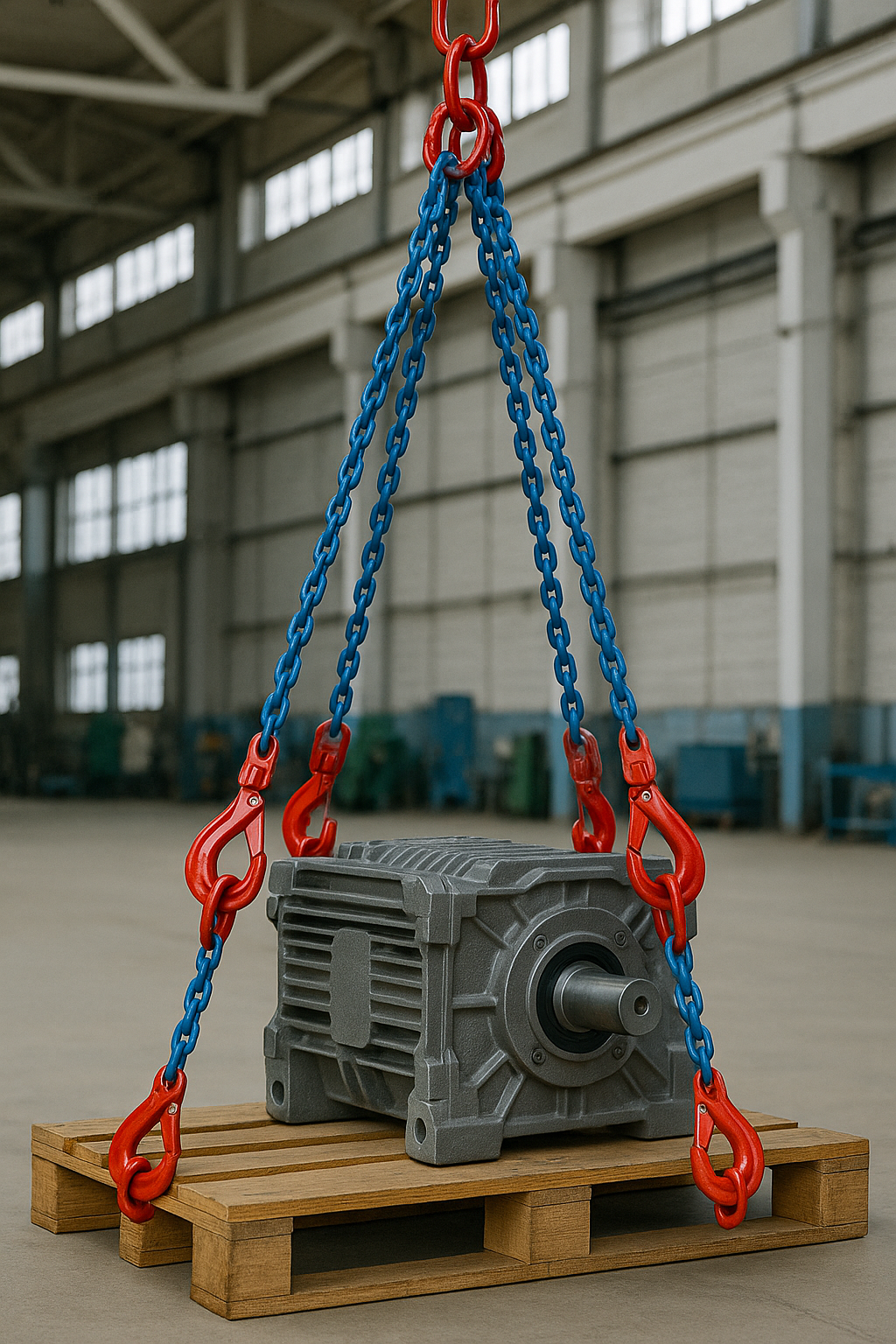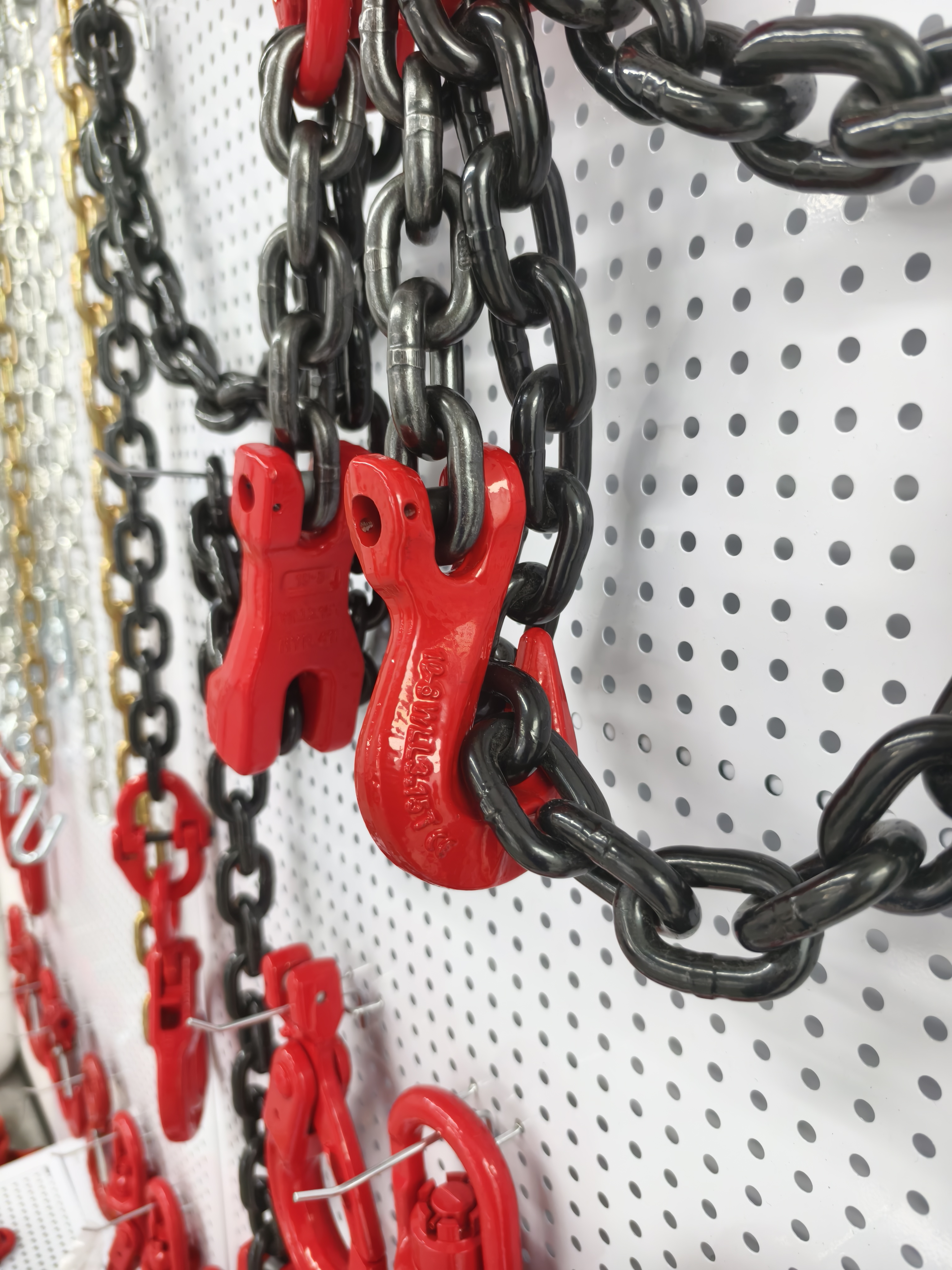Our staff will contact you within 12 hours, You can also contact us through the following ways:
Contact US WhatsApp: +86 18263873187
- Email: [email protected]
- Tel: +86 18263873187
- Web: www.lifting-chain.com
A chain alone moves nothing and a hook without a chain holds nothing. Pair them correctly and you raise heavy loads smoothly, extend hardware life, and breeze through every audit. This guide focuses on complete “lifting chains with hooks” assemblies, explains how link grade, hook type, and sling geometry interact, and shows you a step-by-step path to the perfect choice. Data come straight from Topone’s catalogue at lifting-chain.com, so you trust every number.
Chain Grade | Yield MPa | Safety Factor | Proof Load | Common Hook Pair | Best Field |
G80 | 640 | 4 : 1 | 2.5 × WLL | Clevis grab / sling | Construction yards |
G100 | 980 | 4 : 1 | 2.5 × WLL | Eye latch / self-locking | Production lines |
Stainless G80 | 640 | 4 : 1 | 2.5 × WLL | Stainless latch | Food & chemical |
G100 links carry twenty-five percent more load than the same-size G80; stainless solves corrosion but costs extra. Pick grade first because hook jaws and latch springs follow the chain strength.
Ø mm | G80 WLL kg | G100 WLL kg | Chain kg / m | Clevis Grab Max Jaw mm | Self-Lock Max Jaw mm |
8 | 2 000 | 2 500 | 1.4 | 11 | 13 |
10 | 3 150 | 4 000 | 2.2 | 14 | 17 |
13 | 5 300 | 6 700 | 3.8 | 18 | 22 |
16 | 8 000 | 10 000 | 5.7 | 23 | 28 |
20 | 12 500 | 16 000 | 9.0 | 29 | 34 |
26 | 21 200 | 26 500 | 14.2 | 37 | 44 |
WLL values follow EN 818-2; hook jaw sizes match Topone’s forged components.
Clevis grab hook grips chain links for quick length adjustment. Use on short lifts and tie-downs.
Eye sling hook spreads load on a full-throat surface; ideal for single-leg vertical picks.
Self-locking hook snaps shut automatically under load; pick it when crews work above head height.
Foundry hook opens wide for ladle trunnions but needs extra angle allowance.
Always match hook grade to chain grade; never mix G80 hooks with G100 links.
List max routine load including rigging.
Multiply by angle factor (1.4 @ 45°, 2.1 @ 60° four-leg).
Open the matrix; pick first Ø whose WLL beats the number.
Confirm hook throat fits the load point with ten-percent spare.
Check headroom; G100 may drop one size and recover 150 mm.
Write tag data—Topone stamps “8-TPN” or “10-TPN” plus heat; record it for audits.
Finish all six in one minute and never oversize or underspec again.
Clip grab hooks on straight link segments, never on welds.
Keep sling legs equal length; uneven angles overload one hook.
Oil latch pivots weekly; grit freezes springs and jams hooks.
Gauge link diameter monthly; retire at ten-percent wear.
Replace hook if tip gap grows five percent or latch fails shut test.
Your logbook proves diligence and keeps insurance inspectors happy.
 Click here for more product information, pictures are for reference only.
Click here for more product information, pictures are for reference only.
Slaughter halls, acid tanks, and salt mines attack paint and zinc in weeks. Stainless G80 chain and matching hooks skip coatings, clean fast, and keep the audit team calm. Sticker price doubles, yet lifecycle cost drops after year two because crews avoid three repaint cycles and two emergency swaps.
Chain & Hook Set | Purchase USD | Service Life yrs | Tonnes Lifted / yr | Cost / t |
G80 Ø 16 + grab | 210 | 4 | 2 400 | 0.022 |
G100 Ø 13 + self-lock | 240 | 4 | 2 400 | 0.025 |
Stainless G80 Ø 16 + latch | 420 | 6 | 2 400 | 0.029 |
G100 raises capacity and frees headroom with a small cost jump; stainless stretches service life in corrosive zones.
 Click here for more product information, pictures are for reference only.
Click here for more product information, pictures are for reference only.
Follow the matrix, match hook to grade, and let Topone lifting chains with hooks lift heavier, last longer, and keep your schedule on track—explore options now at lifting-chain.com.